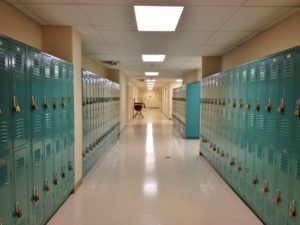If you have a child heading off to high school in the coming months or years, or have one already attending a school but who needs a change, there are many factors to consider before you make your decision.
With so many schooling options available these days, and education and school life so important to a child’s future, it can be incredibly daunting trying to work out which is the best choice to make. If you need some assistance, read on for some tips to consider today.
Decide What Your Priorities Are
One of the first things you should do when looking for the right high school for your kids is to be clear about what your priorities are. This can vary tremendously from family to family, so is well worth taking the time to think about and discuss.
Environment and Philosophy
You want to find a school that matches well with your own values and your requirements. For example, look at the cost of the school fees to see if the price range is achievable for you over the coming years, and examine how far your children would have to travel each day if they were to attend that venue.
In addition, you may have a preference for a same-sex school over a co-ed one, or vice versa. You may also be looking for an institution where pastoral care is a big part of the curriculum and community, or where the specific educational philosophy aligns with your own.
For some parents, it may be very important to find a school that has top-notch facilities, or that does or doesn’t have a uniform. You may also be very interested in an educational facility that has a wide breadth of topics for children to choose from in their last year of study. Some parents also look only for a small school, while others like the idea of their children attending a larger one.
Areas of Focus
As well, consider whether your main focus is going to be on a school’s academic record, or its other programs, such as sports, music, arts, language, or science. Ask yourself if all of these study areas are of equal importance, or if one is more vital than others?
If you have a child who excels in, or simply loves, a particular area, you should seriously consider finding a school that specializes in this department. There are many top schools around the country which have focus on one discipline and which can therefore help gifted children to become even better at their preferred area. If your child loves athletics, for example, you’ll find academy sports in Utah which are well rated.
Utilize Recommendations
Another great way to find the right school for your children is to utilize word-of-mouth recommendations. The parental grapevine can be a font of worthwhile information, and is useful when it comes to finding out the ins and outs of how a school operates, what its community is like, the style of the teachers, and so on.
Ask around and you’re sure to find out if any parents have a bad word to say about a school, or if they have nothing but glowing testimonials to share. Keep in mind too that opinions from other parents can be more up to date than some of the information you may find online or in printed publications.
 Visit the School
Visit the School
Lastly, make sure that you pay a visit to any school that you’re interested in before you book your child in to attend there. Head to an open day/evening or arrange an appointment so that you have a chance to meet the principal or other leader at the school, as well as some of the teachers and the students.
Keep in mind though that while public events provide a good opportunity to get an overview of a school, you may find that you receive the most accurate impression of a facility if you check it out on a normal school day.
Visiting each school on your shortlist will allow you to compare facilities and notice if they seem well maintained and modern (or not), and to get a feel for the environment and how discipline is handled. School visits will also let you see if current students are polite and well presented.
When checking out a school, take note to see what the learning environment is like in the classrooms. See how the tables are arranged, what teaching methods are used, and if classes appear to have access to plenty of well-organized resources.























